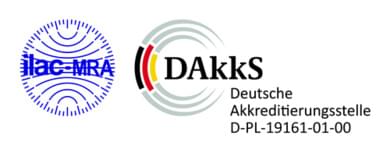Sujet 'Amiante d'origine naturelle'
Numéro spécial du Journal of Environmental and Engineering Geoscience (E&EG), volume 26, numéro 1, février 2020
Ce numéro spécial du Journal of Environmental and Engineering Geoscience (E&EG) est un résumé des articles présentés lors d'un symposium sur "l'amiante d'origine naturelle (NOA)", qui s'est tenu dans le cadre du XIIIe congrès de l'Association internationale pour l'ingénierie géologique et l'environnement (IAEG) et de la réunion annuelle de l'Association of Environmental and Engineering Geologists (AEG) à San Francisco en septembre 2018.
Notre collègue Stefan Pierdzig a également participé à ce symposium sur invitation et a fait une présentation sur la situation en Allemagne concernant la manipulation de l'amiante d'origine naturelle.
 RESEARCH ARTICLE | FEBRUARY 20, 2020
RESEARCH ARTICLE | FEBRUARY 20, 2020
Regulations Concerning Naturally Occurring Asbestos (NOA) in Germany—Testing Procedures for Asbestos
Stefan Pierdzig
Environmental and Engineering Geoscience (2020) 26 (1): 67–71.
https://doi.org/10.2113/EEG-2278
ABSTRACT
In Germany, potential asbestos-containing rocks are used as raw materials for a number of engineering applications. These rocks are ultrabasites (dunite, harzburgite), igneous rocks (basalt, gabbro, norite), and metasomatic or metamorphic rocks like talcum, greenschist and amphibolite. Based on the German Gefahrstoffverordung (Hazardous Substances Ordinance), regulatory statutes exist for operations using these rocks and resultant composites and products.
The authorities state that in Germany no natural rocks exist with more than 0.1 mass-% of one of the six regulated asbestos minerals. But it is well known that there are rocks with a high modal concentration of these minerals with a non-asbestiform, columnar to prismatic habitus. Under mechanical stress during handling, they can lead to fibrous cleavage fragments, which conform to the World Health Organization (OMS) “respirable asbestos fiber” definition. In view of this fact, the regulations changed in 2009, with revision of the Technical Rules for Hazardous Substances (TRGS) 517: any fibrous asbestos particles, regardless of whether or not they represent naturally occurring asbestos or are of cleavage origin, are evaluated for potential hazards associated with handling of these rocks.
If the OMS fiber concentration is <0.1 mass-%, rocks and products can be used and re-used under protective measures. At concentrations >0.1 mass-%, the material is considered hazardous waste.
These regulations apply to many industrial sectors that exploit and process rocks, using them in road building and track construction and when they are recycled. Analysis (by scanning electron microscopy, SEM/energy dispersive x-ray spectroscopy, EDS) to determine the asbestos concentration of rocks, gravels, or dusts is carried out in the <100-µm, grain-size fraction produced by sieving or grinding. The results provide a representation of a worst-case examination of the air quality during mechanical treatment of these materials. Workplace monitoring is done by air sampling to survey an exposure limit of 10,000 fibers/m3 of air (0.01 f/cc).


